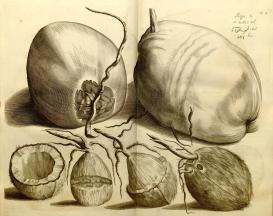This group examines the Hortus Indicus Malabaricus (1678–93)—a survey of the floral riches of Malabar in southwest India—as an example of experiential natural knowledge-making in seventeenth-century Europe and India. Hendrik Adriaan van Reede tot Drakenstein, its principal creator, worked closely with a group of European and native knowledge bearers to create the Hortus’s representations of plants. The group analyzes how reading and observation came together in this work to form a reader-viewer’s conception of plant-objects, aiming to identify the Keralan caste-based categories through which medical practice and materia medica appear in the Latin descriptions. The outcome will be a critical edition of the Hortus, accompanied by scholarly essays on different aspects of the work.
The Working Group is co-sponsored by the Max Planck Research Group “Experience in the Premodern Sciences of Soul and Body” and the MPIWG Library.

